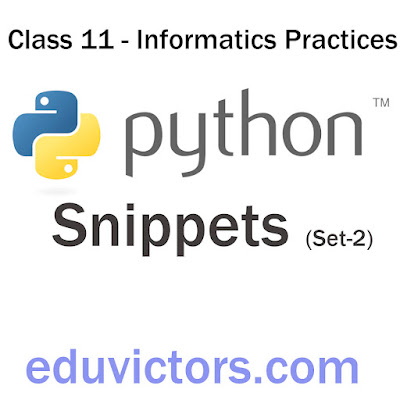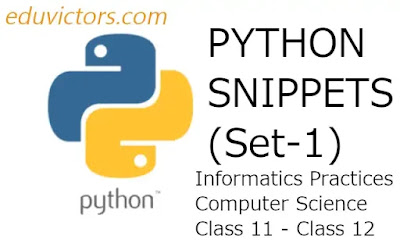Class 11 - Informatics Practices - Python Snippets (Set-2)
Write Python Programs for the following problem statements:
1. Write a program in python to input marks in 5 subjects from the user and display the average marks.
2. Write a program in python to read details like name, class, age of a student and then print the details firstly in same line and then in separate lines.
3. Write a program in python to input a number and print its first five multiples.
4. Write a program to read a number n and print n, n² , n³ and n⁴
5. Write a program that generates the following output: 5 @ 10 @ 9













